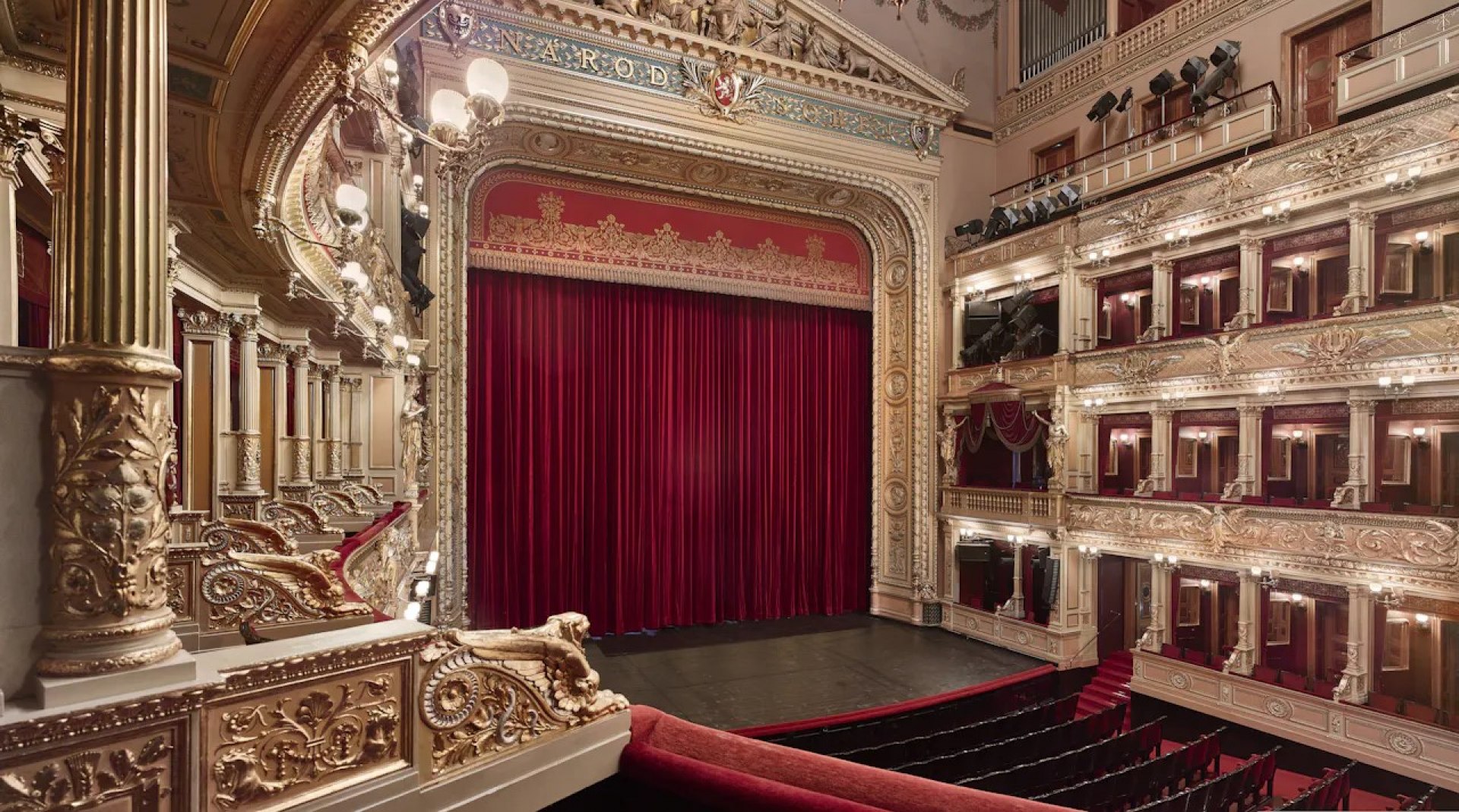Šárka
Mo | Tu | We | Th | Fr | Sa | Su |
The legend can be found in a variety of literary sources, from Cosmas of Prague’s 12th–century Chronica Boemorum to Alois Jirásek’s ever-popular Old Czech Legends, first published in 1894. During the 19th-century National Revival, Bohemian mythology inspired a number of artists, influenced in part by the fake Manuscript of Dvůr Králové and Manuscript of Zelená Hora, motifs of which even appear in the decorations of Prague’s National Theatre. Besides Libuše and Šárka, the legend of the women’s uprising reflects in Smetana’s cycle My Country (the tone poems Vyšehrad and Šárka), as well as in Otakar Ostrčil’s opera The Death of Vlasta. Fibich evidently closely worked on Šárka with the librettist Anežka Schulzová, a pupil of the prominent Czech author Jaroslav Vrchlický, with their amorous relationship having had a positive impact on their endeavours. The opera premiered on 28 December 1897 at the National Theatre in Prague, conducted by Adolf Čech. The production, directed by Adolf Krössing, featured scenery by Robert Holzer and Mikoláš Aleš, with the latter’s visual style becoming a traditional model for the costumes in the majority of the adaptations that followed. The first to portray Šárka was the outstanding 28-year-old soprano Růžena Maturová (also the first to perform Antonín Dvořák’s Rusalka).
Our new production will be presented more than four decades after the most recent performance of Šárka at the National Theatre. It will be conducted by Robert Jindra, music director of the National Theatre Opera, who has invited the German stage director Kay Link.
National Theatre Chorus
National Theatre Orchestra
Program and cast
Conductor - Robert Jindra
Creative team
Stage director - Kay Link
Sets - Frank Albert
Costumes - Nina Reichmann
Dramaturgy - Beno Blachut
Language: In Czech, surtitles in Czech, English
Prague National Theatre
The National Theatre today
The historical building of the National Theatre, constructed in 1883, is generally considered the prime stage in the CzechRepublic. It is the flagship of the National Theatre institution, today amounting to five buildings and encompassing four companies. You can see there Opera, Drama and Ballet performances.
Idea of building a stately theatre for the Czech nation
The National Theatre is the embodiment of the will of the Czech nation for a national identity and independence. Collections of money among the broad mass of the people facilitated its construction and hence the ceremonial laying of its foundation stone on 16 May 1868 was tantamount a nationwide political manifestation.
The idea of building a stately edifice to serve as a theatre was first mooted in the autumn of 1844 at meetings of patriots in Prague. It began to materialise through a request for “the privilege of constructing, furnishing, maintaining and managing” an independent Czech theatre, which was submitted to the Provincial Committee of the Czech Assembly by František Palacký on 29 January 1845. The privilege was granted in April 1845. Yet it was not until six years later – in April 1851 – that the Society for the Establishment of a Czech National Theatre in Prague (founded in the meantime) made its first public appeal to start collections. A year later the proceeds of the first collections allowed for the purchase of land belonging to a former salt works with the area of less than 28 acres, which predetermined the magnificent location of the theatre on the bank of the river Vltava facing the panorama of Prague Castle, yet at the same time the cramped area and trapezoidal shape posed challenging problems for the building’s designers.
By car
To the centre (OldTown), approach on Masarykovo nábřeží (Masaryk embankment) in the direction from the Dancing House, at the crossroads in front of the National Theatre turn right to Divadelní street and then right again to Ostrovní street to the National Theatre car park. Parking costs 50 CZK/h.
By tram
By daytime trams Nos. 6, 9, 18 and 22 and night trams Nos. 53, 57, 58, 59 to the stop “Národní divadlo” – in front of the NT historical building; by daytime tram No. 17 to the stop “Národní divadlo”.
By metro
To the station “Můstek”, line B (yellow), and then by foot on Národní street; or to the station “Karlovo náměstí” and then two stops by tram No. 6, 18 or 22 to the stop “Národní divadlo”. To the station “Staroměstská”, line A (green), and then two stops by tram No. 17 to the stop “Národní divadlo”.

 EN
EN DE
DE IT
IT FR
FR ES
ES RU
RU JP
JP RO
RO
 Seating plan
Seating plan 